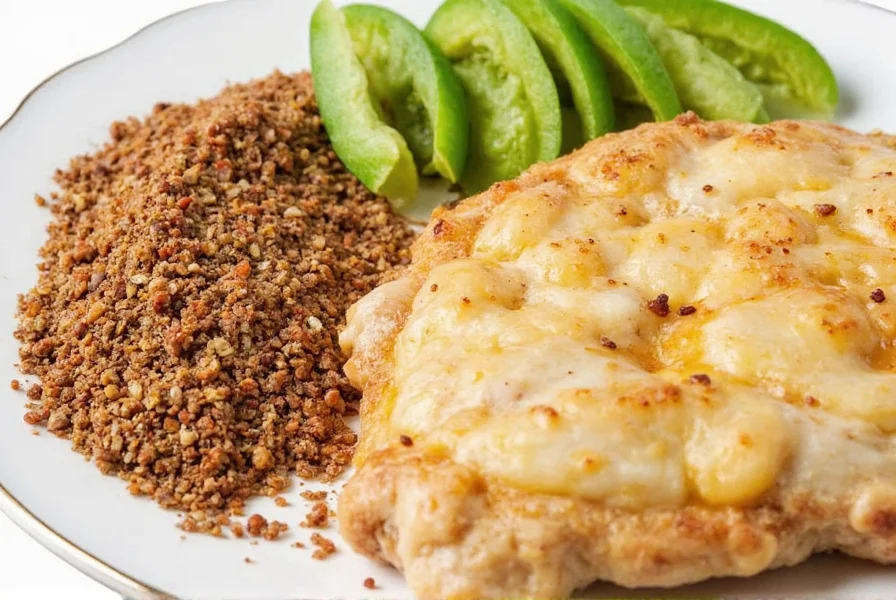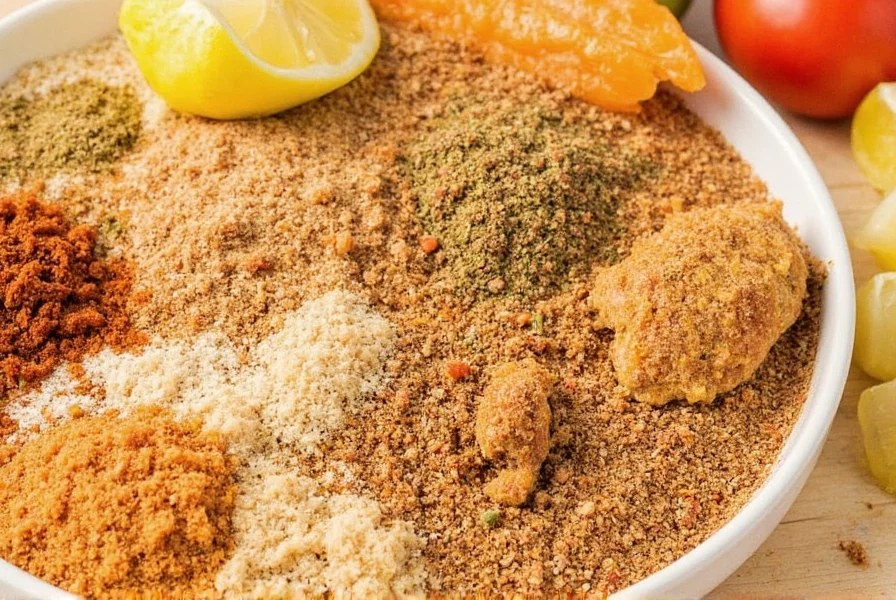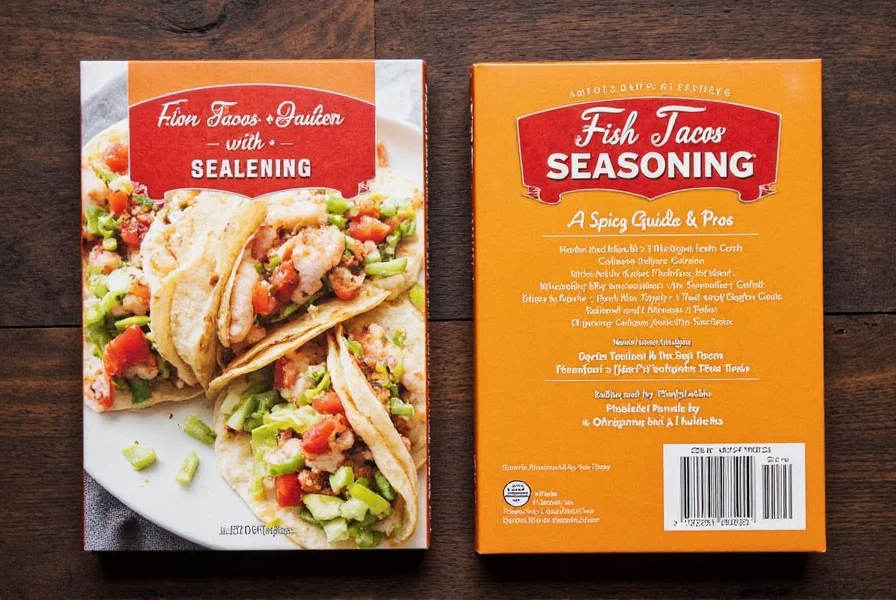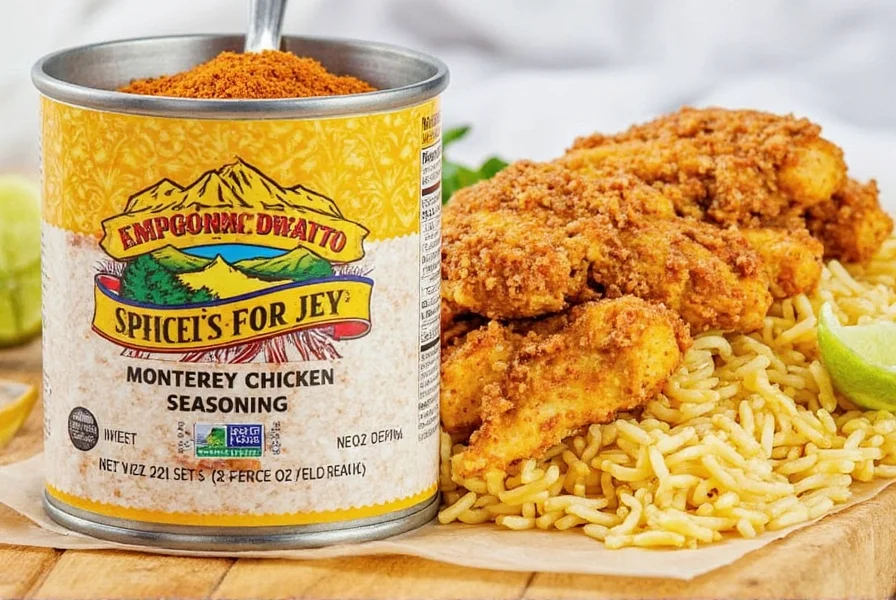Introduction to Monterey Chicken Seasoning
Monterey Chicken Seasoning is a coastal-inspired spice blend originating from California, featuring lemon zest, thyme, oregano, black pepper, and subtle herbs. It delivers a bright, zesty flavor perfect for grilling chicken, fish, shrimp, or vegetables. This guide covers everything you need to know: what it is, how to use it effectively, and how to choose the best brand for authentic coastal taste.

The Flavor Profile of Monterey Chicken Seasoning
Monterey Chicken Seasoning stands out for its balanced citrus-herbal profile. The lemon zest provides a refreshing tang, thyme and oregano add earthy depth, while black pepper offers mild heat. Unlike generic chicken seasonings that rely on garlic or salt, this blend captures California's coastal freshness without overpowering the main ingredient.
| Seasoning | Flavor Notes | Best For |
|---|---|---|
| Monterey Chicken Seasoning | Citrusy, zesty, slightly herbal | Grilled or roasted chicken, fish, shrimp, vegetables |
| Italian Seasoning | Herby, aromatic, slightly tangy | Pasta dishes, soups, meats |
| Garlic Herb Seasoning | Garlicky, herbaceous, savory | Roasted vegetables, grilled meats |

Practical Tips for Using Monterey Chicken Seasoning
- Marinate properly: Mix 1-2 tablespoons of seasoning with 1-2 tablespoons of olive oil. Rub onto chicken, fish, or shrimp and let marinate for 30 minutes (or up to 24 hours for bone-in chicken) to maximize flavor penetration.
- Balance heat levels: The blend has mild heat. For extra spice, add a pinch of cayenne pepper, but avoid overpowering the citrus notes. For a smoky twist, combine with smoked paprika.
- Use beyond chicken: It works exceptionally well on white fish (cod, halibut), shrimp, pork chops, roasted potatoes, or even popcorn. Adjust quantities based on protein size—1 teaspoon per 4-6 ounces of meat.
- Pair with complementary sides: Serve with light, fresh sides like citrus-infused rice, grilled asparagus, or a simple arugula salad to enhance the coastal profile without competing flavors.
- Enhance sauces and dressings: Add 1 teaspoon to vinaigrettes, yogurt dips, or creamy sauces for instant depth. For a quick marinade, mix with lemon juice and honey.

Frequently Asked Questions About Monterey Chicken Seasoning
What makes Monterey Chicken Seasoning different from other chicken seasonings?
Monterey Chicken Seasoning is uniquely coastal-inspired, with prominent lemon zest and aromatic herbs like thyme and oregano. Unlike traditional chicken seasonings focused on garlic or salt, it delivers a bright, refreshing taste without heavy spices. This makes it ideal for lighter dishes where you want flavor without overpowering the protein.
What are the 3 must-know tips for mastering Monterey Chicken Seasoning?
1. Marinate properly: For maximum flavor, mix with olive oil and let proteins marinate for at least 30 minutes. Bone-in chicken benefits from 2-4 hours of marination.
2. Balance heat carefully: Start with the recommended amount, then add cayenne only if needed. Over-spicing can mask the delicate citrus notes.
3. Pair with simple sides: Avoid heavy sauces or starchy sides. Opt for fresh vegetables, citrus rice, or salads to let the seasoning shine.
Can I use Monterey Chicken Seasoning for dishes other than chicken?
Absolutely. It works perfectly with fish (especially white fish like cod), shrimp, pork chops, roasted vegetables, and even tofu. For seafood, use half the amount to avoid overpowering delicate flavors. It also adds zesty depth to salad dressings, roasted potatoes, or as a seasoning for air-fried snacks.
How should I store Monterey Chicken Seasoning to maintain its freshness?
Store in an airtight container away from light, heat, and moisture. A cool, dark cupboard is ideal—never above the stove. Properly stored, it retains peak flavor for 1-2 years. For maximum freshness, replace every 6 months if used frequently, or freeze in small portions for longer storage.
Can I make my own Monterey Chicken Seasoning at home?
Yes. A simple homemade version requires: 2 tbsp dried thyme, 2 tbsp dried oregano, 1 tbsp dried lemon zest, 1 tbsp garlic powder, 1 tbsp onion powder, 1 tsp black pepper, and 1/2 tsp salt. Mix thoroughly and let sit for 24 hours to meld flavors. For best results, use high-quality, fresh spices and store in a dark glass jar.
Buying Guide: How to Choose the Best Monterey Chicken Seasoning
When selecting Monterey Chicken Seasoning, prioritize quality ingredients and flavor balance. Here’s what to look for:
Key Features to Check
- Ingredient quality: Look for natural, non-GMO spices without artificial additives or fillers. Avoid blends with excessive salt or MSG.
- Flavor balance: A good blend should have clear citrus notes (from lemon zest), balanced herbs, and mild heat. Avoid overly salty or one-dimensional options.
- Brand transparency: Reputable brands list all ingredients clearly and often specify sourcing (e.g., "California-grown lemon zest").
Top Brand Comparisons
| Brand | Key Features | Best For |
|---|---|---|
| McCormick | Consistent, widely available, balanced citrus-herb profile | Everyday cooking, beginners, grocery store convenience |
| Lawry's | Richer, bolder flavor with stronger herbal notes | Those who prefer intense seasoning, steak or robust dishes |
| Trader Joe's | Fresh, artisanal blend with visible lemon zest pieces | Home chefs seeking premium quality, unique flavor experiences |

Conclusion
Monterey Chicken Seasoning is a versatile coastal-inspired blend that elevates simple dishes with bright, refreshing flavors. By understanding its unique profile, mastering proper usage techniques, and selecting high-quality brands, you can consistently achieve restaurant-quality results at home. Whether grilling, roasting, or experimenting with new recipes, this seasoning is a must-have for any kitchen seeking authentic California-inspired taste.











 浙公网安备
33010002000092号
浙公网安备
33010002000092号 浙B2-20120091-4
浙B2-20120091-4